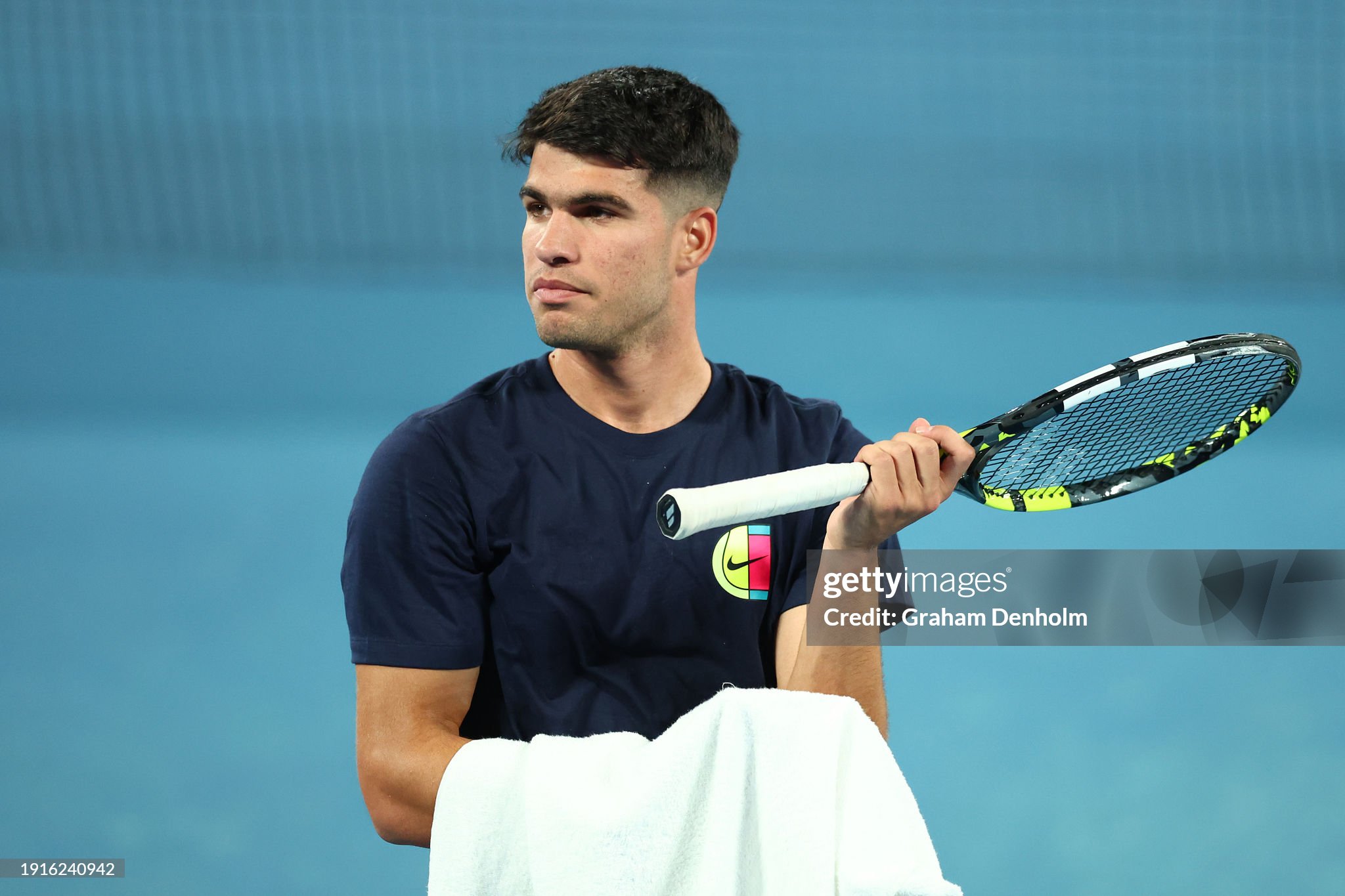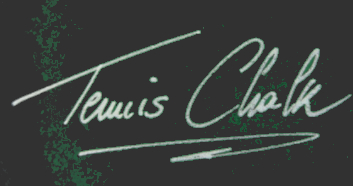Carlos Alcaraz: how many credits left?
Do I like Carlos Alcaraz’ tennis? Well, yes… and no.
I get it – one should be affected by utter incompetence if caught not completely astonished by the Spanish wunderkind and his hyperenergetic athletism and firepower. Fans all around the world go nuts when they come across his all-attacking tennis style, blended (courtesy of King-for-a-day Juan-Carlos, the expert sourcerer) with a never-say-die defensive attitude. Grand Slams have therefore started again to report a non-Fab3 player able to win more than one out-of-nowhere major title, with due respect for Sir Andy and Stan, of course.
One may be labelled as a stubborn nostalgic for not recognizing Carlito is already another cornerstone in the history of tennis writing his own plot. If Federer rose through the post-Sampras ranks by combining Pistol Pete and Agassi’s opposit approaches, we cannot deny Alcaraz is doing the same with his mix of the best bits out of each of the three godfathers of 21st Century tennis.
One should ultimately been blamed with sour jealousy if not admiring Carlos’ impeccable and muscular body frame, this young Spaniard having achieved a full-round macho appearance well before having earned his own driving license. You do not see that many teenagers having already put on enough mass to look almost intimidating, while all their co-eds would be easily be blown away by a springtime breeze.

One might also be identified as short-sighted and having no minimal sense of dynamic thinking if not forecasting an inevitable ascending trajectory for Alcaraz’ all-round set of skills. Given his young age, such learning curve he is experiencing is just at its beginning. With time, just like with the Fab3 again, his shot-making is likely to get more and more refined, in search for the ultimate perfection.
Therefore: how dumb may one be for not getting passionate about this young, bright fellow?
A lot, really. But this is when the emotional side of my (tiny and limited) brain takes predominance and starts elaborating something which just… does not look perfectly right while watching Alcaraz playing, as if not all pieces were actually falling into place.
Let’s streamline the whole thing: first, Carlos looks like as if he had not been in fact designed by former World No.1 Ferrero, but by a some Playstation videogame chief designer. Sure, he takes the court and you immediately wonder if his coach had found a way to turn god-mode on, i.e. a usually conceived programmers’ tweak to enable setting your character’s strengh, speed, stamina to unhuman levels. With that set up, Alcaraz then is able to get to every ball, to bend all the way down to the point of scratching his knees on hard surfaces, to fire ripping forehands and backhands all other the place, and to show no sign of tiredness, Also, he appears mastering every shot of the game, from stop-volleys to tweeners to drop-shots to the little fakes. How on earth…?!? Does he really lie on the other side of the equation besides “Federer + Nadal + Djokovic”?

Well, in my humble opinion… not really. Apparently, but not yet.
Let’s now take into consideration my guilty pleasures of our sport: volleys and tricky shots. When it comes to deft touches, Alcaraz clearly knows a thing or two: he finishes off a lot of points by volleying the ball into deep corners or just beyond the net. Does he remind me of Stefan Edberg, then? Again, nope. Not at all.
He knows a thing or two because he has clearly trained those shots extensively, in order to gain an obvious advantage over most of his generation of opponents, who in most cases are able to caress the ball just like they are able to caress a nail with a hammer. But he is definitely not a natural – he has a scholastic approach, clearly visible: his wrist indeed is firmly blocked, exactly as we are all taught when given lessons. Too firmly. I would define it tightly, rather than firmly.


If you allow me to speculate further for a second: in his pursue for a Fab-mix recipe, Alcaraz on one side uses Nadal’s raquet, the Babolat Pure Aero, on the other side tries to volley like Federer; issue is, the same steamy stick which is so suitable to whip top-spin groundstrocks from well behind the baseline cannot serve as well at the net. The Aero Pro frame, in its standard setup, weights just as much as 300g, while natural volleyers à la Edberg, Sampras, Becker, Federer,… all gravitate towards meaty and solid models (ProStaff and similar) in the 340g range. I can tell you from direct experience that with such devices you feel a direct and natural connection with the ball, allowing your instinct to decide how to direct it back: if your racquet is a brick wall, your hand may remain loose and active; on the other side, with a light racquet your approach at the net has to be way more rational, calculated, and ultimately mechanical: with the ball momentum dictating on your device, not the other way round, your hand is primarily tasked to hold firm. Bottomline: Alcaraz cannot jingle naturally at the net by means of a stick designed to play naturally from the baseline.
Secondly, more of the same is valid for his drop-shots. As impeccably as they may be deployed during rallies, a lack of natural approach is clearly visible, especially on the forehand side: again here, a scholastic stiffness in his wrist-elbow axis is clearly visible. In particular, his elbow maintaines his 90-degree position all throughout the execution, leaving all the arm movement in charge of his shoulder; this differs a lot from those players with a natural approach to drop-shots, who reach and accompany the ball by means of wrist and elbow adjustments, even last-second. This helps disguising the tricky short shot, while Alcaraz’ outcome is usually positive thanks to him choosing the perfect time to play it (when the opponent is way behind the baseline, moving away, or both) and despite being clearly readable.

Thirdly, all the rest of his arsenal of shots and skills: it is based on a lethal combination of muscular explosivity, flexibility, and long-lasting energy. He spends all his match-time in running, bending all the way down, changing direction, and repeating. As a 20-year-old, the stress on his body may be relatively easy to relieve by means of effective physical conditioning, but for how long? Over the last two years Alcaraz has been extremely successful and has established himself as the Next Big Thing by winning two majors, but at the same time has already had to skip last year’s ATP Finals and Australian Open due to injuries. It is quite unremarkable that such a young player already shows sign of body wear, as if his god-mode actually was subjected to a time limit.
I am herewith not indulging into further trains of thought. My bottomline is that, yes, Carlos Alcaraz took the tennis world by surprise when he came to the big stage. With a remarkable technical level, explosive physicity, and a clear consciousness of both, he accredited himself as the young player who brought a game one (or two) notches higher than his competition, at times including also Mr. Djokovic and Mr. Nadal. Two Grand Slam tournaments now under his belt have established and consolidated the charisma he cast on us tennis fanatics.
However, in 2001 one Lleyton Hewitt had done the same. With a playing style a world aside from his predecessors, this triumph of will and athleticism had got none other than Pete Sampras (one not really prone to jenerosity towards his opponents) to predict him as his successor for many years to come. In fact, besides the arrival of Roger Federer, what surfaced and became apparent was that World No.1 Hewitt had been playing at his own limits. All of a sudden, his opponents had learned to read his game (and exploit his limits), while at the same time his body started reminding him all those efforts were not toll-free.
Alcaraz is definitely more technically complete than Hewitt, and twenty years after physical conditioning is on a different planet. He may keep doing what he has been doing over these twenty-four, astonishing months, even improving further, or… are his game credits numbered and expiring over the next few seasons?

Well the grip of Charlie, while managing volleys is justified by the fact, that speed has increased exponentially in the last 20 years. I mean you cannot compare Stefan Edberg volleys, since he had the time for going down the net to execute the shot correctly. But nowadays, I think time for volleying is reduced due to speed increase for returning. So at the end volleying is sometimes like an instinctive shot.
For drop shots I think Charlie style is really personal.
I rather think that Charlie limits is tactical, as he likes winning in a spectacular way. He must be more concrete, and getting the point. The enormous percentage of break points not won is another example, since you cannot give chances to your opponents, especially when on the other side of the net you have Sinner, Djokovic or Medvedev.
Let ‘s see what happens. but I think he has more chances on clay and not on hard courts.